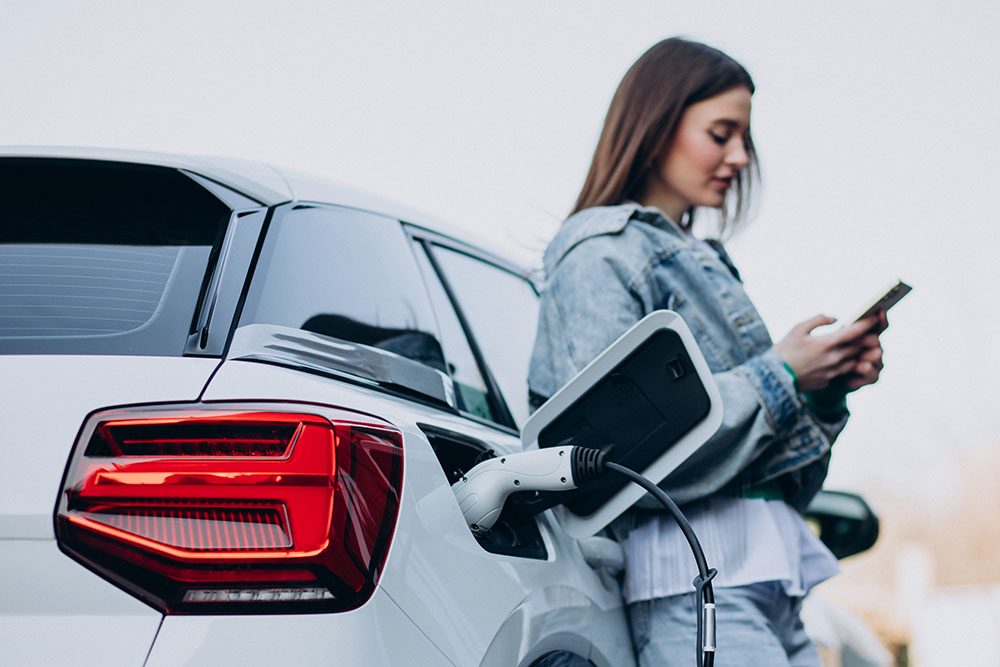ver the past decade, electric vehicles (EVs) have gone from a niche experiment to a mainstream phenomenon. Major automakers now offer dozens of fully electric models—from compact city cars to luxury SUVs—while governments worldwide set ambitious targets for phasing out internal-combustion engines. But the shift to electrified mobility isn’t just about tailpipe emissions; it’s about a fundamental transformation in how we power, maintain, and live with our cars.
1. How Do EVs Work?
At their core, EVs replace the gasoline engine, fuel tank, and exhaust system with:
- Battery pack: A high-capacity lithium-ion battery stores electrical energy.
- Electric motor: Converts stored energy into motion, offering instant torque and smooth acceleration.
- Onboard charger and power electronics: Manage charging rates, regenerative braking, and drive-mode settings.
Because there are far fewer moving parts than in a traditional engine, EVs typically require less routine maintenance—no oil changes, fewer fluids, and no spark plugs.
2. The Benefits of Going Electric
- Lower Operating Costs
- Electricity per mile is generally cheaper than gasoline.
- Reduced maintenance often translates into hundreds of dollars in annual savings.
- Zero Tailpipe Emissions
- Improves air quality in cities and reduces your carbon footprint.
- Many jurisdictions offer tax credits, rebates, or lower vehicle-registration fees for EV owners.
- Superior Driving Experience
- Instant torque yields brisk acceleration from a standstill.
- Quiet, vibration-free operation enhances comfort on every journey.
3. Charging 101: From Home to Highway
Home Charging
- Level 1 (120 V outlet): Adds roughly 5–8 km (3–5 mi) of range per hour—suitable for overnight top-ups if you drive modest daily distances.
- Level 2 (240 V charger): Delivers 30–60 km (20–40 mi) per hour; installation of a dedicated wall charger is recommended for most EV owners.
Public and Fast Charging
- Level 3 (DC Fast Charging): Provides 80% charge in 20–40 minutes on many modern chargers—ideal for road trips.
- Network memberships: Major charging networks require apps or RFID cards; costs can vary by time-of-day, membership tier, and station operator.
Pro Tip: Plan longer journeys using apps that map chargers along your route, and always confirm connector compatibility (e.g., CCS, CHAdeMO, or Tesla North American Charging Standard).
4. Battery Health and Longevity
- Depth of discharge: Frequent full-to-zero cycles can slightly accelerate degradation; aim to keep your state of charge between 20% and 80% for daily use.
- Thermal management: Many EVs include liquid-cooling or heating systems to maintain battery temperature, but parking in shaded or climate-controlled areas helps preserve capacity.
- Software updates: Manufacturers periodically release over-the-air updates that optimize charging speeds and battery efficiency.
Most EV batteries come with warranties covering 8 years or 160,000 km (100,000 mi), providing peace of mind for long-term ownership.
5. Total Cost of Ownership: What to Expect
While the sticker price of an EV can be higher than its gasoline counterpart, when you factor in:
- Fuel savings
- Reduced maintenance
- Government incentives
many drivers find that an EV breaks even—and often becomes cheaper—over a typical 5–7 year ownership period.
Consider running your own “cost per kilometer/mile” analysis by comparing local electricity rates and fuel prices, and don’t forget to include installation costs for a home charger.
6. The Road Ahead: What’s Next for EVs?
- Improved battery chemistry: Solid-state batteries promise faster charging, higher energy density, and better safety.
- Vehicle-to-grid (V2G): Future EVs may feed stored energy back into your home or the grid, turning cars into mobile power banks.
- Autonomous integration: Many next-generation EV platforms are being designed to pair seamlessly with advanced driver-assist and self-driving systems.
As infrastructure expands and technology matures, electric vehicles will continue to reshape not only how we drive, but how we think about energy and transportation as a whole.
Getting Started
- Test-drive multiple models to compare range, comfort, and charging experience.
- Talk to current EV owners—online forums and local clubs can offer real-world insights.
- Assess your driving habits and home-charging options before buying.
Whether you’re ready to make the switch today or simply want to learn more, understanding the fundamentals of electric vehicles will keep you well ahead in the rapidly evolving world of automotive technology.













